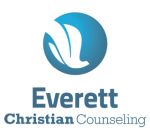The aim of this article is to look back at my life through the various tools employed by I/O Psychology in the areas of narrative therapy, taking a proactive view towards anticipated regrets, leveraging my weaknesses, and using the after-action review tool to aid in action learning during work. It is also my privilege to share these tools with you.
Narrative Therapy
Stories capture our imagination and give us insight into ourselves. Examining cultural meta-stories is one way to understand how I frame my past. One meta-story that has captured my imagination and told a larger of story of my life is the story of the lost son found in the Bible (Luke 15:11-31).
The story is about a son who asks to claim his share of the inheritance from his wealthy dad before his father passed away. The son ends up travelling to a far away country and squandering his wealth in wild living. He ends up so poor that he has to work feeding the pigs and, unfortunately, the pigs have more to eat than he does.
He then comes to his senses and decides to ask forgiveness from his dad and return home. His dad welcomes him back with open arms and even throws him a big party. His older brother is not happy, and yet the father explains that the older brother has everything the father has, yet his younger brother was lost but now is found.
I see myself, primarily, as the lost son who was forgiven much by a gracious God. At times, I can see myself as the self-righteous older brother, proud of everything I deserve, not realizing that God made a lot of success possible in my life. I want to model the kindness of the father, who represents God in the story.
Famed Christian author Henri Nouwen describes the touch of the father as a healing, compassionate touch without lust, greed, resentment, jealousy, or vengeance. This compassion will always be a model for my life as I walk towards the future.
 The second meta-story that captures my life is the 80’s hit movie “Top Gun.” This movie is about a hero named Maverick who is unorthodox in his approach to be the best fighter pilot in the U.S. Air Force. He goes through many hardships that almost end his career, but eventually works through the obstacles and even comes to terms with the death of his close friend, “Goose.” The story ends with him eventually becoming a flight instructor himself.
The second meta-story that captures my life is the 80’s hit movie “Top Gun.” This movie is about a hero named Maverick who is unorthodox in his approach to be the best fighter pilot in the U.S. Air Force. He goes through many hardships that almost end his career, but eventually works through the obstacles and even comes to terms with the death of his close friend, “Goose.” The story ends with him eventually becoming a flight instructor himself.
I do see myself as Maverick in this story. I can strive to be the best in my field. Although, the goal to be “top gun” may not be the goal that ends up being achieved, since I am confident that God’s ways are higher than mine. I am content with my journey leading to places that I did not expect at first, and this contentment frames my life at this point in time. “And we know that in all things God works for the good of those who love him, who have been called according to his purpose” (Romans 8:28).
Regrets
In 1992, leading organizational researcher Mary Kay DeGenova found that a random sample of 122 retired people would like to spend “much more time” in family activities, prayer, and education if they had to do their live over again. The author suggests men wanted to spend the highest amount of time in education and women would like to spend the highest amount of time in developing their minds or intellect.
Mary Kay DeGenova suggests that less education may have increased regrets because of the perception and reality of missed opportunities in life. Spiritual leadership involves a lot of formal and informal education, and this occurs in many ways through the body of Christ, the church universal. Doing life reviews throughout our life journey is an important aid in doing spiritual, emotional, and cognitive reflection.
 Furthermore, personality researchers Cynthia Torges, Abigail Stewart, and Kathi Miner-Rubino suggest that people acknowledging and not coming to terms with regrets leads to lower well-being than people who did not report regrets in lifestyle choices or missed opportunities. Being proactive with regrets and understanding other people’s regrets can help me look forward and eliminate many of the common regrets people have later in life.
Furthermore, personality researchers Cynthia Torges, Abigail Stewart, and Kathi Miner-Rubino suggest that people acknowledging and not coming to terms with regrets leads to lower well-being than people who did not report regrets in lifestyle choices or missed opportunities. Being proactive with regrets and understanding other people’s regrets can help me look forward and eliminate many of the common regrets people have later in life.
Having an implementation intention is a powerful tool to be proactive in accomplishing life goals. Implementation intentions are basically cues to spur action. Peter Gollwitzer, who came up with the idea and study of implementation intentions, describes them in this way: Implementation intentions tell us the when, where, and how of responses leading to the accomplishment of a goal.
An implementation intention for my career would be to be more attentive to prioritizing my urgent and important goals and create cues to help me set a time to review my tasks for the week. A personal goal is to increase prayer time. To accomplish this goal, I will create a cue that will remind me to spend some time in prayer in the morning. The cue for prayer would be brushing my teeth and then to create immediate reinforcement by praying fairly soon after the cue.
I would like to pray more during the workday, as well. I will remember to say a short prayer to the Lord for wisdom and guidance before I start a series of sessions. The cue for prayer before sessions would be the Google calendar reminder that my first session of the day is starting in 15 minutes.
 An implementation intention for spending time in family activities would to try spend one weeknight going out somewhere for fun. This may be going on a family trip to the museum or even just to the park. I would cue my memory by doing the task of creating an appointment in my calendar on Friday night and/or Saturday morning for a family night out for the following week, then communicate the idea(s) to my family and modify the plan based on feedback. Then, I would carry out the activity on the day decided.
An implementation intention for spending time in family activities would to try spend one weeknight going out somewhere for fun. This may be going on a family trip to the museum or even just to the park. I would cue my memory by doing the task of creating an appointment in my calendar on Friday night and/or Saturday morning for a family night out for the following week, then communicate the idea(s) to my family and modify the plan based on feedback. Then, I would carry out the activity on the day decided.
Leveraging my Weaknesses
Christian psychologist David Benner suggests that having empathy for others and pointing others to the presence of God is the integration of Psychology and Theology. An area of weakness is that it is easier for me to be an instrument of healing in the lives of others than myself. It can be more difficult to examine my own spiritual and psychological problems and bring them to God’s light.
I ask myself, “Can I trust God with my anxiety?” Doubts make it difficult to trust God at certain times. I can turn to task busyness to mask my spiritual and psychological problems. My weakness in this area has been a source of strength that God has used in my counseling ministry. Exposing these weaknesses to the light of Christ allowed me to be authentic, real, and approachable to my clients.
A primary aim of a therapist’s training is to be authentic and real to our clients. Businessman and author Max De Pree argues that there is no space to be deceptively simple about a single bottom line in the world. Being authentic allows me to deal with the complexity of life and convey that to others. It is a major strength and it is why God choose the weak things in the world to shame the strong (1 Corinthians 1:26-30). I make an honest attempt to seek God in my doubts because I know He works in my imperfections.
After Action Reviews
Taking a cue from the U.S. Army, I/O Psychology researchers Lloyd Baird, Phil Holland, and Sandra Deacon are pioneers in the large-scale application of the after-action review (AAR).
An AAR:
- Is learning from performance usually done in real time.
- Selects everyone present during the action regardless of status in the organization.
- Is conducted on the most relevant processes in the organization.
- Occurs close to real time.
- Can occur in any environmental setting.
- Needs to be succinct and to the point to achieve carrying out the next doable task quickly.
The recommended time for an AAR is roughly 15 minutes to 1 hour, and the key purpose is to quickly improve action. AARs are useful in discovering obstacles to success when undertaking a significant and important action in the organization.
For example, a church discovered from doing an after action review that attendance was declining because there were no church-wide community events to connect all the different fellowship circles. When the church increased church-wide community events, attendance increased as connections grew and the parishioners’ sense of belonging in the church increased.
Other benefits of the AAR are that it creates a drive towards purpose and value. The AAR promotes looking at events and actions from many different perspectives to come up with novel and divergent solutions. The AAR also nurtures a habit of continuous reflection in carrying out actions that result in continuous improvement internally and externally.
 The final benefit of an AAR is that we have a process of putting pen to paper, which reinforces learning. An objective map of lessons learned can be created to inform future decisions and planning. Combined, these benefits make the AAR an effective reflective tool that is useful for spiritual, mental, emotional, and social growth. Below, I outline the steps to conduct an AAR.
The final benefit of an AAR is that we have a process of putting pen to paper, which reinforces learning. An objective map of lessons learned can be created to inform future decisions and planning. Combined, these benefits make the AAR an effective reflective tool that is useful for spiritual, mental, emotional, and social growth. Below, I outline the steps to conduct an AAR.
After-Action Review Steps
Intent
Step 1: What was the intent and purpose of the action in the first place? How was the action being accomplished? Is our purpose aligned with our action? If no, then how can we make the purpose align with our action?
What happened?
Step 2: What were the results? Who was involved with the action? Why was the action carried out? How did we end up with these results? What did you just do? What happened first, next, or last? What did you intend to do? What did you observe?
What have we learned?
Step 3: What do we know now that we did not know before? What advice would you have for someone who started down the same path? What are some key takeaways from the action? What was good about what happened? What could have been better? How does this apply to you specifically? How was that significant? What struck you about that? What do you understand better about yourself or your group?
What do we do now?
Step 4: What do we do now? Ask for short-/mid-/long-term actions items to execute. What will you do again or do differently next time? When, where, or how will you take different action? What would you like to do with that information?
Take Action
Step 5: How could you repeat that experience if it was successful? If a failure, how would you apply the lessons learned to a new action? In what ways will you take actions based on the information in the previous steps?
Tell Someone Else
Step 6: Who else needs to know what you have learned? How can the information gained be used to help other departments or organizations? How are you going to tell them? What do they need to know?
Receive Feedback
Step 7: What lessons have been learned from going through the previous six steps that can be applied to actionable items for our current project? What new information did we receive from telling someone else? When and where will the next AARs assessment be done and for what purpose? What was outcome of conducting the AARs assessment?
ReferencesBaird, L., Holland, P., & Deacon, S. (1999). Learning from action: Imbedding more learning into the performance fast enough to make a difference. Organizational Dynamics, 27, 19–32.
Benner, D. G. (2002). Nurturing spiritual growth. Journal of Psychology & Theology, 30, 355-361.
DeGenova, M. K. (1992). If you had your life to live over again: What would you do differently? International Journal of Aging and Human Development, 34(2), 135-143.
De Pree, M. (2003). Leading without power: Finding hope in serving community. San Francisco, CA: Jossey-Bass
Gollwitzer, P. M. (1999). Implementation intentions and effective goal pursuit: Strong effects of simple plans. American Psychologist, 54, 493-503.
Hill, C. (2014). Scaffolding reflection: What, so what, now what? In C. D. McCauley, D. S. DeRue, P. R. Yost, & S. Taylor (Eds.), Experience-driven leadership development (pp. 229-233). San Francisco, CA: Wiley.
Nouwen, H. J. M. (2000). The return of the prodigal son: A story of homecoming. London, England: Darton, Longman, and Todd.
Torges, C. M, Stewart, A. J., & Miner-Rubino, K. (2005). Personality after the prime of life: Men and women coming to terms with regrets. Journal of Research in Personality, 39, 148-165.
Photos
“Jet,” courtesy of Jeff Cooper, unsplash.com, CC0 License; “Seagull,” courtesy of Alistair Dent, unsplash.com, CC0 License; “Dusty Road,” courtesy of Forrest Cavale, unsplash.com, CC0 License; “Soccer Game,” courtesy of Alec Moore, unsplash.com, CC0 License










